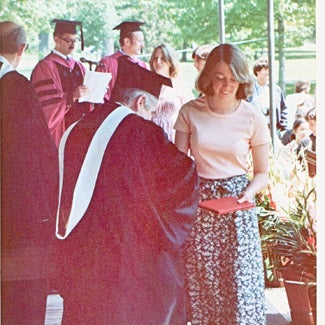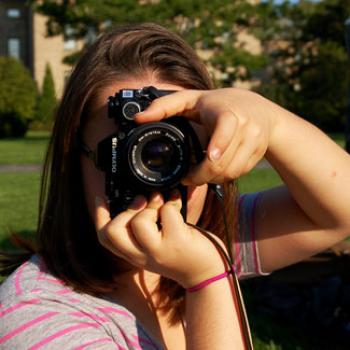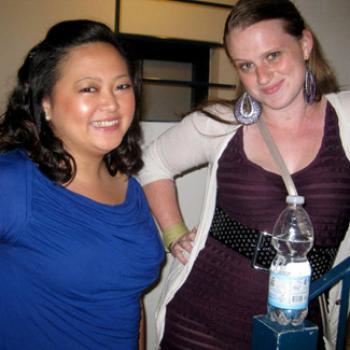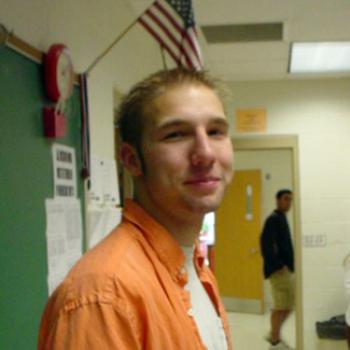On leaving Oberlin and returning
Emily Nord McClintock ’76
“What I thought must be standard fare at all colleges - the excellent music, the spectacular art museum, the earnest students - proved not to be standard at all.”

I was born and grew up in Oberlin, thinking little about what it meant to live in a college town. The college and conservatory were part of the fabric of the town and my family’s life: excellent recitals and lectures were always available, professors and their children were our neighbors and friends. The rocks in Tappan Square underwent their regular transformations; the town’s population fluctuated with the school calendar. My friends and I watched as Oberlin students marched against the Vietnam War, appeared on the cover of Life Magazine, and made their voices heard.
As seniors at Oberlin High School, several of my friends and I were given the opportunity to take a freshman-level class of our choice at the college. Aside from giving me shocking but valuable insight into the level of work expected of college students, these classes gave us something even more valuable to antsy high school students: an Oberlin College I.D. Mingling with Oberlin students, we felt terribly mature.
When it was time to apply to college, I chose another liberal arts college in upstate New York. I enjoyed my freshman year there and was glad to experience life away from my hometown. I gradually realized, however, that I had been completely spoiled living down the street from Oberlin College. What I thought must be standard fare at all colleges — the excellent music, the spectacular art museum, the earnest students — proved not to be standard at all. After receiving the worst grade of my college career in zoology (I had expected to major in biology but could not wrap my head around memorizing the anatomy of an earthworm), I decided to change my major to art history, which was not a strength at my current school. I transferred back to Oberlin.
I loved being at Oberlin as a college student. I took fantastic art history and studio classes with Ellen Johnson, Bill Hood, Richard Spear, Athena Tacha, and Forbes Whiteside. But I was increasingly uncertain that art history would hold a future for me; a memory for dates and artists was not my strong suit. I was saved by an excursion from the classroom to the studios of the Intermuseum Conservation Association, then located in the Venturi addition to the Allen Art Museum. Richard Spear, my professor for Baroque Art, had decided that we should see a conservation treatment in progress, on a large 17th century oil painting whose canvas support had deteriorated to such a degree that it could no longer safely support the paint. What we saw when we gathered around the work table was the side of the painting, specifically the back side of the ground layer, that had been next to the canvas since the artist had applied it three hundred years earlier; the canvas support had been removed by the conservators thread by thread. I thought this was the most amazing thing I’d ever seen, and I had my “Eureka” moment: I would study art conservation. Because graduate programs in that field required two years of chemistry, with some trepidation I added introductory chemistry to my course load the following fall. I survived and even came to love the subject - and I know that was due to the excellent team of professors who taught it: Norman Craig, Richard Schoonmaker, and William Fuchsman.
As a transfer student, I missed the experience of being new at the same time as my classmates, but by being a freshman at another school, I realized that Oberlin had everything that mattered to me. I am so glad that I came back.
Tags:
You may also like

On her passion for photography
“Being at Oberlin and loving the arts go hand in hand, and luckily I get to translate my love of people, music, theater, and dance to a medium that serves both as a reminder and an inspiration to...
Ma'ayan Plaut ’10

On becoming a Latin major
“I realized how passionate everyone around me was about the exact same things ... they all shared the exact same joy I felt from studying such an obscure but wonderful language and culture.”
Maggie Killman ’13

On an Oberlin education
“Each semester, to my continual surprise, Oberlin provides me both with the raw material of life experience and the tools with which to shape it into something with purpose.”
Nolan Grieve ’10